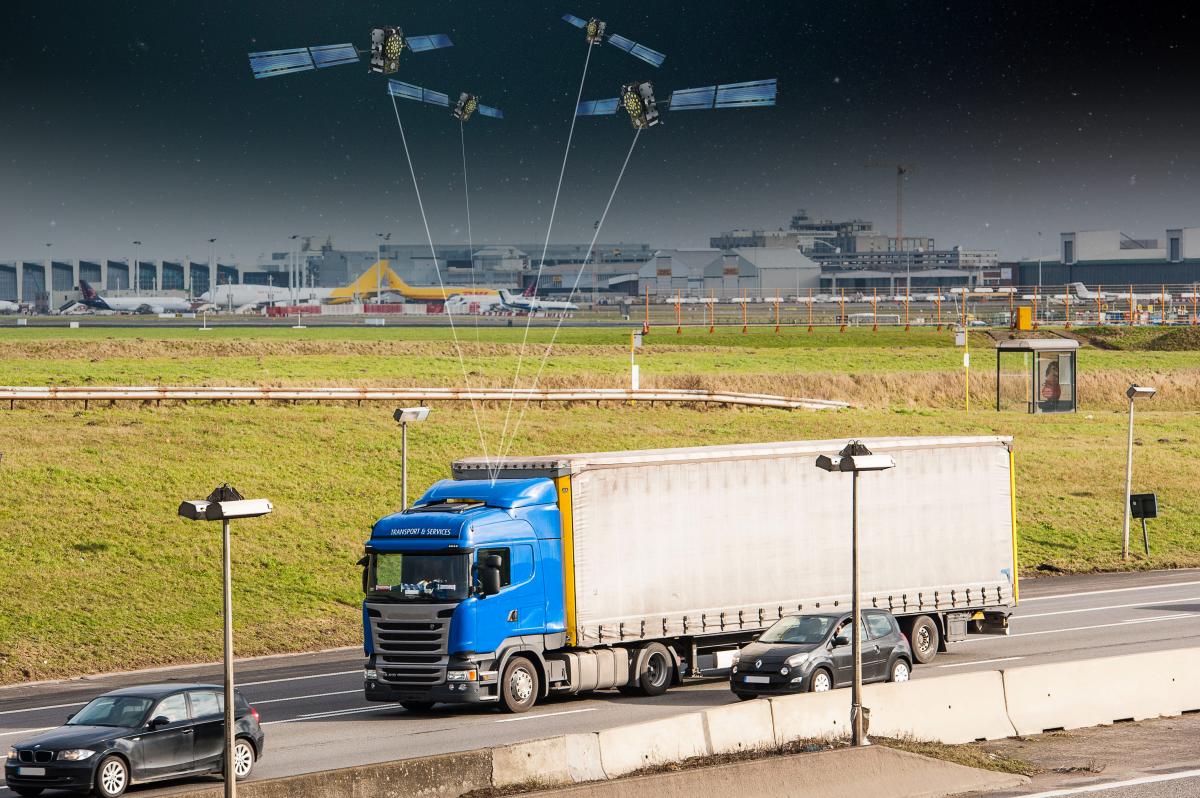The Horizon 2020 funded PRoPART project is developing an enhanced Real Time Kinematic (RTK) software solution for automated vehicles and advanced driver assistance systems. To do this, project researchers are combining some of Galileo’s distinguishing features with other positioning and sensor technologies.
‘Vision Zero’ is a point in the future that is free of deadly and catastrophic motor vehicle accidents. Thanks to the development of automated vehicles and other advanced driver assistance systems, which are predicted to reduce traffic density and increase travel efficiency, this vision is quickly becoming a reality.

However, before we can reach Vision Zero, we first need to develop the precise and robust positioning technology that these automated vehicles and advanced driver assistance systems demand – which is exactly what the GSA-funded Horizon 2020 PRoPART project has set out to do.
Today’s autonomous vehicles use a variety of sensors, starting from GNSS but also including cameras, laser scanners, ultrasonic and radar. The connected and automated vehicle applications currently being developed depend on these systems being able to cooperate in order to determine the vehicle’s absolute position relative to any obstacles.
“No single technology is capable of providing the required absolute positioning in all situations, and when we combine different technologies, it becomes vital that we understand the integrity of the available information,” explains Project Coordinator Stefan Nord. “The PRoPART project aims to develop and enhance an existing GNSS RTK (Real Time Kinematic) software solution by exploiting the distinguished features of Galileo signals, as well as combining it with other positioning and sensor technologies.”
The GNSS benefit
To provide this required integrity, PRoPART proposes an RTK technique that is already widely used for precise GNSS positioning based on the use of code and carrier phase measurements coming from the main GNSS constellations (i.e., GPS, Galileo). Although the use of carrier phase measurements allows for centimetre level accuracies, it also means one must confirm the integrity of such signals – which is a complex and time-consuming process.
“One limitation with the RTK technique is that it requires reference data from a location relatively close to the user in order to mitigate against signal errors caused by, for example, satellite position error,” explains Nord. “Similar to all satellite positioning technologies there can also be areas with poor coverage or signal interference, such as in tunnels or urban canyons.”
Luckily, Galileo ensures higher multipath mitigation and a substantial improvement on the reliability of the carrier phase’s ambiguity resolution. “By including Galileo, the PRoPART project will provide users with a deeply integrated, multi-constellation, multi-channel navigation system that fulfils the requirements on availability and precision for an automated driving function,” adds Nord. The PRoPART project will also augment road infrastructure to provide the reference data required for high accuracy positioning.
Transition period
Nord notes that because there will be a transition period where a lot of vehicles are neither connected nor fully automated, there is a market need for solutions offering high impact during low penetration. PRoPART meets this market need by implementing a Road Side Unit, or RSU, with high precision positioning and that uses both UWB and a traffic monitoring sensor to supply ranging, object perception and EGNSS RTK correction data to the connected automated vehicle. “This allows the vehicle to make safe decisions based on robust data,” he says.
PRoPART will demonstrate its positioning solution using a truck capable of automated driving on motorway conditions.
The project is a consortium of seven partners: RISE, AstaZero, Scania, Waysure, Fraunhofer IIS, Ceit-IK4, Baselabs and Commsignia.
Media note: This feature can be republished without charge provided the European GNSS Agency (GSA) is acknowledged as the source at the top or the bottom of the story. You must request permission before you use any of the photographs on the site. If you republish, we would be grateful if you could link the article back to the GSA website (http://www.gsa.europa.eu).